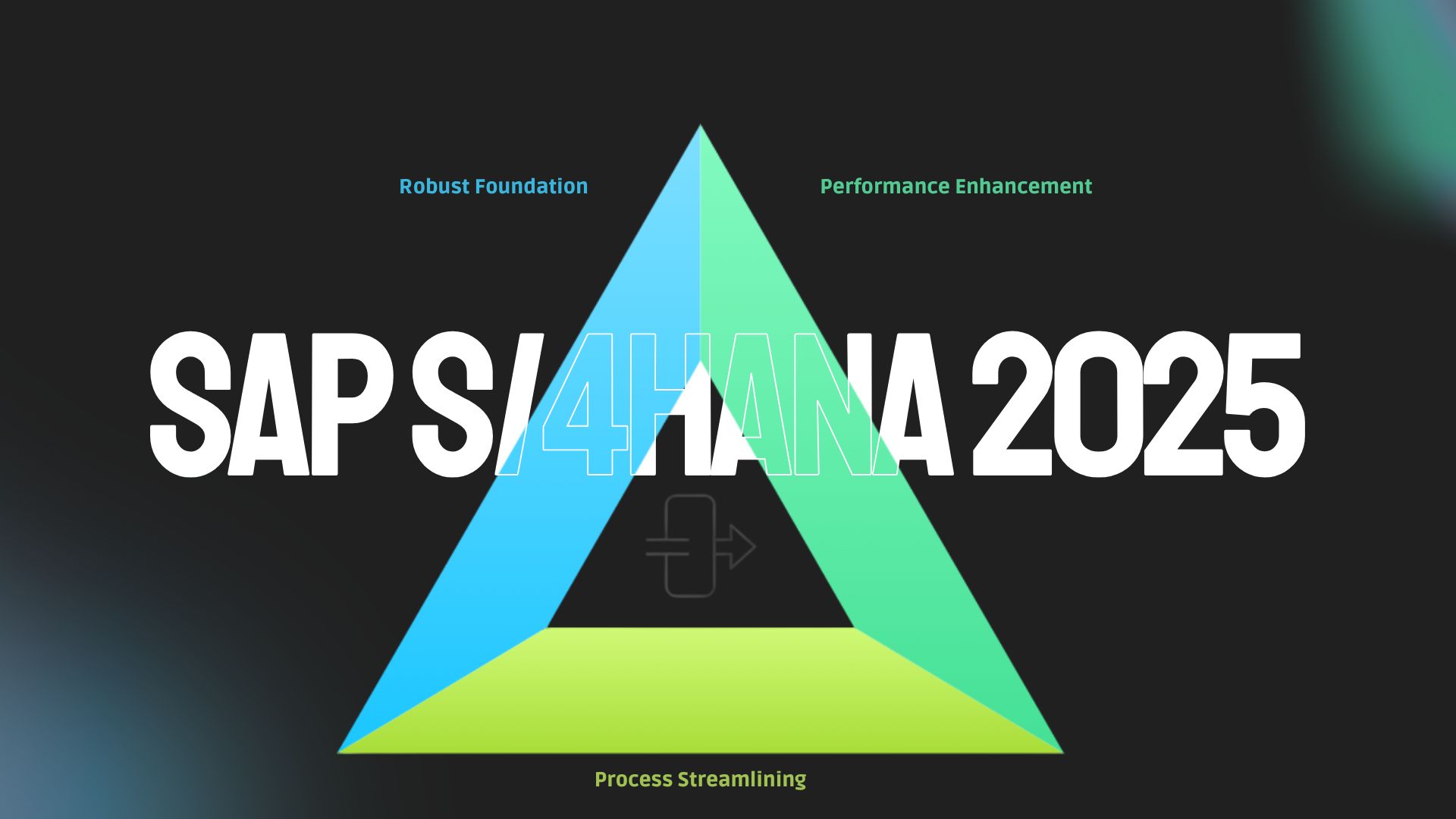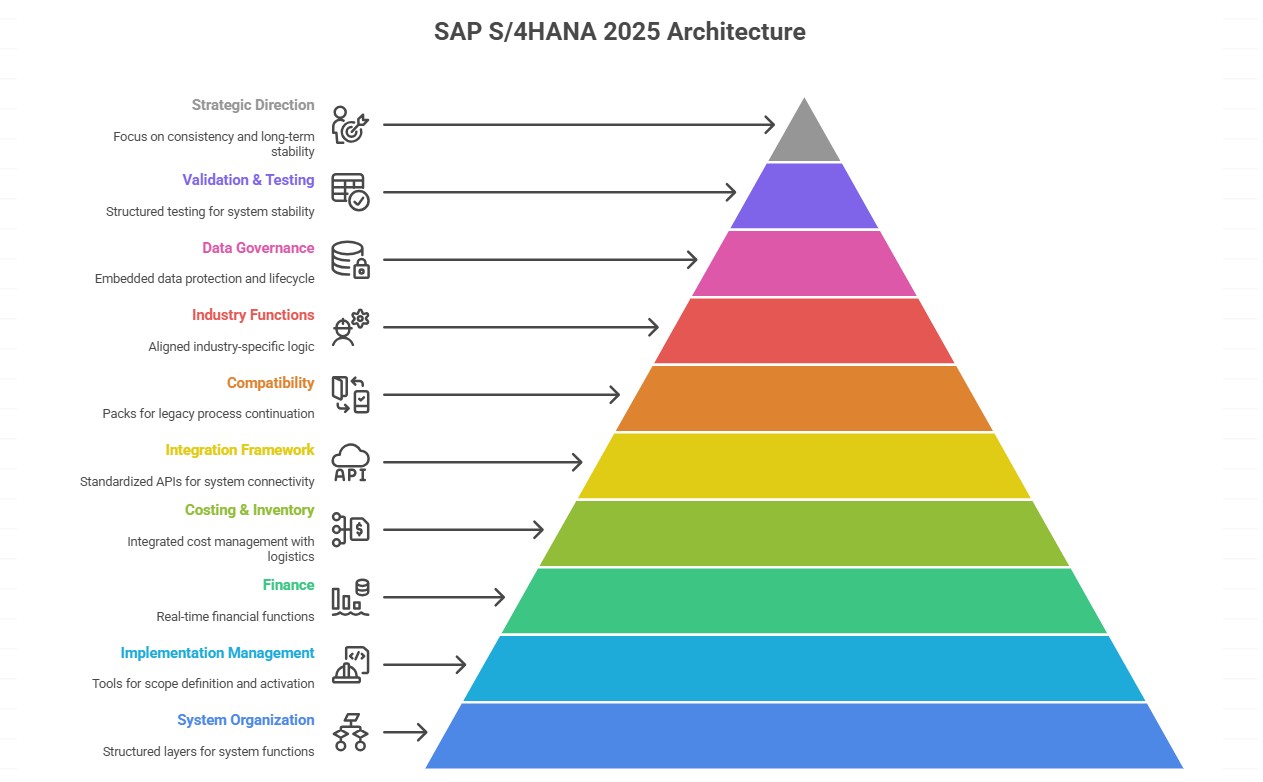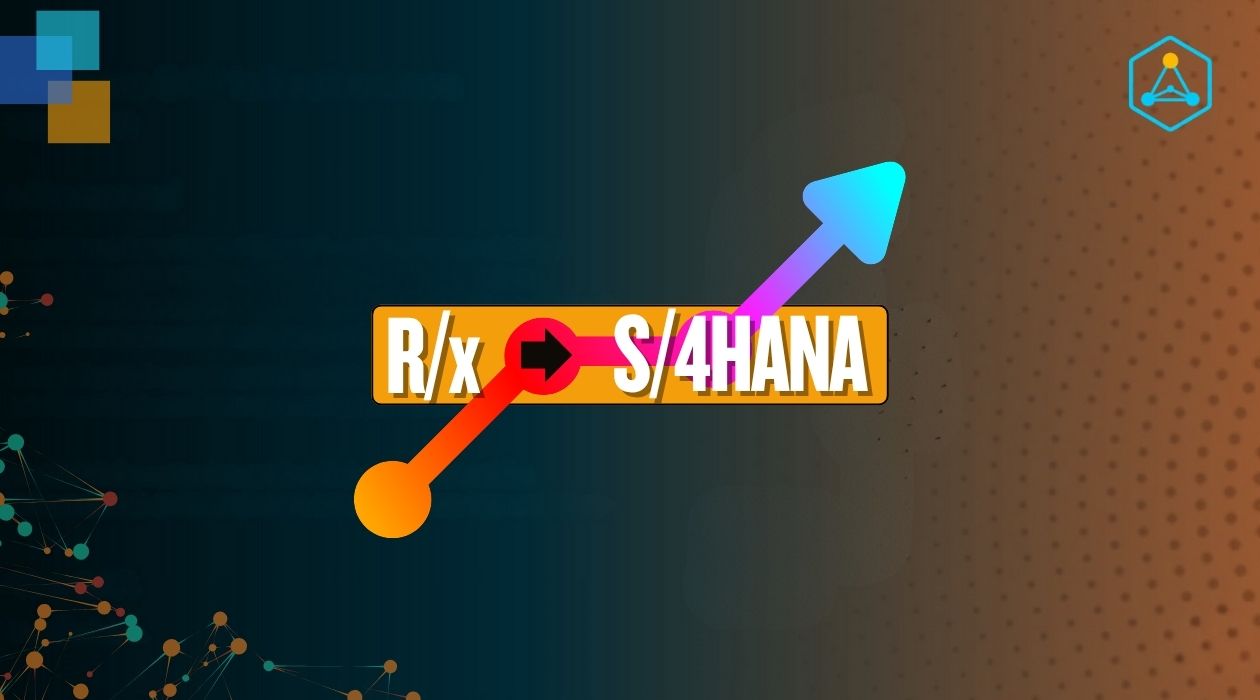
SAP S/4HANA 2025 defines a clear structure for how enterprise functions are built, connected, and maintained. This release does not add layers on top of ERP. It organizes every process and integration point within one consistent model that covers enterprise management, line-of-business extensions, industry functionality, integration frameworks, and governance.
“SAP S/4HANA 2025 doesn’t expand ERP, it organizes it — every process, interface, and control now speaks the same structured language of integration, traceability, and readiness.
Each layer or component has a defined scope and lifecycle that determines how configuration, updates, and coexistence work in practice.

The system architecture separates functions into structured layers.
This structure makes it possible to activate or extend scope without rebuilding the entire system.
S/4HANA 2025 includes built-in tools for scope definition, configuration, and activation.
Project teams can view supported processes, deploy a preconfigured solution, and extend it with customer-specific logic.
These functions reduce manual configuration and provide a controlled setup path.
Key actions for technical teams:
This approach replaces manual configuration cycles with guided activation.
Financial functions now operate as part of a live analytical system.
Predictive accounting generates temporary journal entries from source documents such as sales orders.
This allows analysis of expected margins before final postings.
When actuals arrive, predictive entries are updated automatically.
Event-based revenue recognition posts revenue per cost posting for fixed-price and time-and-material projects.
Profitability reporting runs on the same data without replication or delay.
In practice:
Product cost management integrates directly with logistics and finance.
The system links quantity movements to value postings, ensuring that stock and cost of sales stay synchronized.
It supports both order-based and period-based costing and handles inventory valuation in real time.
Key validations for technical teams:
This integration ensures a single source of truth across finance and operations.
Integration in S/4HANA 2025 uses standardized APIs and event handling.
The system connects with SAP Business Technology Platform, SuccessFactors, Ariba, and third-party systems using consistent interface definitions.
Each API and event is version-controlled to maintain long-term compatibility.
Integration guidance:
This model reduces middleware complexity and creates predictable connectivity across systems.
Compatibility packs in S/4HANA 2025 allow selected legacy processes to continue during transition.
Each pack lists active, restricted, and deprecated functions.
This ensures legacy components can operate until modern equivalents are activated.
Planning steps:
This structure supports gradual adoption without downtime.
Industry content for sectors such as automotive, utilities, retail, and public services now shares lifecycle management and master data models with the core system.
Industry objects follow the same update cycle as enterprise management components.
This prevents version conflicts and reduces maintenance overhead.
Operational checks:
The result is a unified maintenance model across industries.
Data protection and lifecycle functions are embedded within operational processes.
Access control, read logging, and retention management are available at the process level.
Audit transparency is achieved through change tracking and activity logs.
Practical steps:
Governance is not a separate system.
It is part of the operational foundation.
Validation must reflect the structured stack.
Testing should include scope activation, predictive posting behavior, API connectivity, and compatibility coexistence.
End-to-end testing across modules confirms event flows and process synchronization.
Testing approach:
Testing early ensures configuration stability and identifies scope mismatches before migration.
The 2025 release reinforces SAP’s focus on structural consistency.
The architecture favors activation, integration, and traceability over customization.
Each technical improvement aims at predictable change and long-term stability.
Enterprises adopting this version can modernize in measured phases while maintaining daily operations.
The system’s design supports continuous readiness rather than one-time transitions.
At NexXerver, we provide live systems built on the 2025 release structure for exploration and validation.
Teams can configure, test, and verify integrations safely before production rollout.
This prepares organizations for implementation and reduces uncertainty during migration.
S/4HANA 2025 delivers clarity through structure.
Its value lies in predictable modernization — one tested layer at a time.
.jpg)

